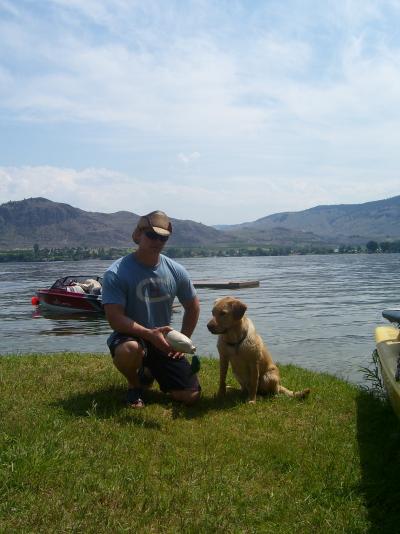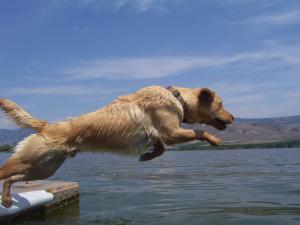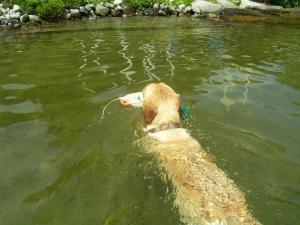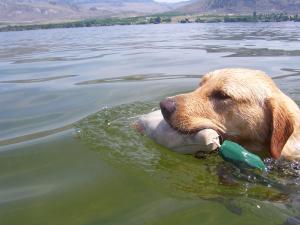Hunting Dog Training
A hunting dog is a great asset to every hunter. It has a varied range of advantages while hunting. Thanks to the dogs, hunters can easily track animals in concealed places. Hunting dogs are good at hunting rabbits, raccoons, and birds. There are many hunting dogs that display great feats of talent and strength while hunting various other animals and birds. Click to watch one of my field experiences on video: training a dog to retrieve.
advantages while hunting. Thanks to the dogs, hunters can easily track animals in concealed places. Hunting dogs are good at hunting rabbits, raccoons, and birds. There are many hunting dogs that display great feats of talent and strength while hunting various other animals and birds. Click to watch one of my field experiences on video: training a dog to retrieve.
There are numerous instances where a dog owner wishes to hunt with the canine, but finds it difficult to carry out the hunting expedition because of the dog’s inadequate level of skill. Training a dog to be a hunting dog could turn out to be either a lengthy and complicated or a simple process, depending on the techniques and equipment used.
Aspects involved in training hunting dogs
There are numerous aspects that should be considered while determining the exact method of training hunting dogs. Given below are some significant aspects involved in training hunting dogs.
Point/ Retrieve – When you train a hunting dog, make sure you understand the importance of the hunting dog having the ability to communicate with the owner. In varied situations, hunting dogs have to point towards the direction a certain animal or fallen bird. Hunting dogs should be able to retrieve the body of the bird.
Conditioning – Conditioning is one of the first and primarily important aspects of  training the hunting dog. It usually starts when the dog starts interacting with its siblings and mother. If the dog undergoes positive experiences it would encourage learning. The main reason for conditioning in hunting dogs is to prevent possessiveness and instill independence in them.
training the hunting dog. It usually starts when the dog starts interacting with its siblings and mother. If the dog undergoes positive experiences it would encourage learning. The main reason for conditioning in hunting dogs is to prevent possessiveness and instill independence in them.
Endurance – Hunting dogs are known to hunt in all terrains and in variable climatic conditions like sleet, snow, and rain and cold. It is an absolute necessity that the dog sustains all the weather conditions and has the stamina to hunt down the animal/bird. If a hunting dog has not been trained properly, it may not survive the hunt.
Tracking – Every dog needs to be adept when it comes to tracking. This would require determination and full attention of the dog. It would need to ignore the scents that do not belong to the bird/animal that is being tracked. It should have the capacity to continue tracking even when a certain trail goes cold.
Training the Dog
When the owner gets down to training the dog, the first thing he does is to teach the dog obedience. If the dog does not follow the commands of the owner, it would be a sheer waste of time and energy getting the dog to do a certain task, once on the hunting field.
After teaching the dog to obey the commands, owners should start teaching the dog to retrieve. Retrieving is usually taught by the breeders, however if the owner wishes to teach the dog, it should start with an object the dog is familiar with and shows great deal of interest in.
For instance- you can use a tennis ball for the initial training sessions. Hold the puppy close to you and try to persuade it by shaking or waving the ball in front it. Then toss the ball at short distance. If the dog follows the ball and catches it, signal/command it to bring the ball back to you. However, don’t be surprised if the dog drops the ball and rushes towards you instead. It is actually very excited to see the master call him.
If you experience such a situation, ask the dog where he left the ball you threw. If the dog doesn’t seem to respond to your command, you should keep throwing the ball and again try to persuade the dog to pick it up. When the dog finally brings the ball to you, praise its efforts and reward him with a bone or bowl of milk, letting him know that he successfully completed the task assigned by you.
 As the puppy becomes confident in fetching the object when you toss it 3-4 feet, you can progress to tossing the object a few additional feet each time. After a while you can place the object at a set distance before releasing the dog to retrieve the object instead of always throwing the object for the dog.
As the puppy becomes confident in fetching the object when you toss it 3-4 feet, you can progress to tossing the object a few additional feet each time. After a while you can place the object at a set distance before releasing the dog to retrieve the object instead of always throwing the object for the dog.
Electronic collars act as a device, which makes the dog trainer correct and make the dog aware of his mistake if he makes any. If the dog makes any misjudgment in obeying the trainer’s command, a slight electric shock is given to the dog, which actually stimulates the dog so that he knows that what he had done was a mistake.
Then there are the dog whistles, which are really popular among the trainers. They are popular because, the whistle makes the trainer capable of controlling the dog even over a long distance. Although this area of training may take some time, it could really be advantageous during hunts.
 In order to make the training aspect seem more fun to the dog, using dummies could be a good option. I like Avery ATB and Hexambumper tools.This also helps giving the dogs a feel of the real thing with respect to retrieving dead birds, small animals, etc.
In order to make the training aspect seem more fun to the dog, using dummies could be a good option. I like Avery ATB and Hexambumper tools.This also helps giving the dogs a feel of the real thing with respect to retrieving dead birds, small animals, etc.
To make the training seem more convenient, you can use training equipment like special electronic collars, harnesses, whistles, dummy scents, and training dummies.

